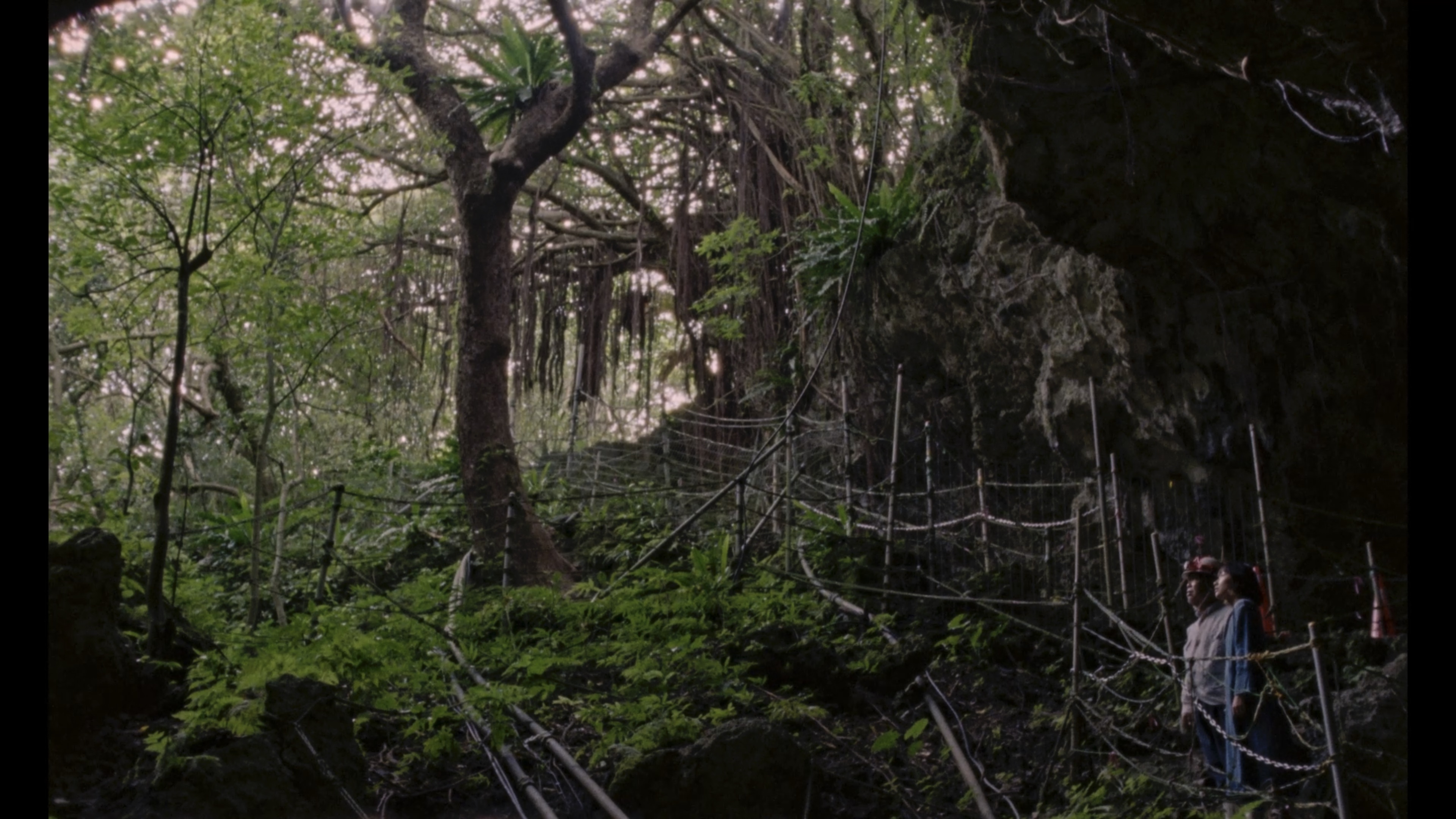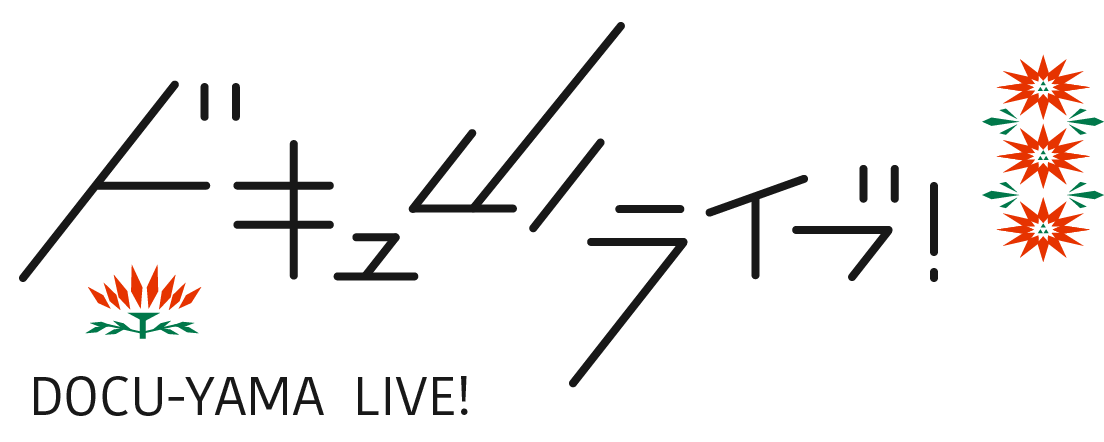 © 2023 Toyonaka Performing Arts Center / trixta
© 2023 Toyonaka Performing Arts Center / trixta
Japanese documentarian Oda Kaori’s latest film, GAMA (2023, shown as part of YIDFF 2023’s New Asian Currents selection), offers a refined sensory experience that sometimes suffers from its own success.
With this film, Oda leads us into the dark abysses of the Pacific War. Gama, the limestone caves that make up Okinawa’s perforated underground, served as refuge spots for locals fleeing the American military in 1945. Fearing capture, these civilians took shelter in the caves and left only to search (mostly unsuccessfully) for food or aid, having to choose every day between starvation and possible torture under the Americans.
A local guide, Matsunaga Mitsuo, chaperones the viewer through this brutal history. Equipped with a hard hat and flashlight, Matsunaga climbs the slippery limestone with obvious expertise. He stands still in the center of the frame and points his flashlight upwards at the ceiling of the cave, which, owing to its domed shape, disperses the light and illuminates his surroundings. Having thus set the stage for his recital, he tells us of women clutching their children while praying for a quick death, or of families discussing where to dispose of their relatives’ putrid corpses. At the end he announces that he will “now create a dark experience” (as if everything up to now could not be described as such) and turns off the light, instantly flooding the frame with blackness. It is only then, after Matsunaga blinds the viewer, that the chilling uncertainty of life in the gama becomes tangible.
Oda repeatedly isolates and heightens the viewer’s senses to great effect. Each drop of water is audible. Clinking pebbles create dense textures of sound. Even the darkness itself seems to eventually undulate in swirls of microscopic dust. Then, when she takes us out of the cave and allows us to sit in the sun, she introduces the deafening sound of a jet flying overhead, shocking us awake through our own sensorial oversensitivity.
This focus on detail and immersion is not always to GAMA’s advantage, however, as the film sometimes comes across as formalistic and detached. The only prominent “character” besides Matsunaga is a woman (Yoshigai Nao) who roams the caves like a specter of its doomed inhabitants. Yet she too is stripped of all expression; the impact of her presence mainly lies in her blue chiffon dress, the fabric of which is strikingly thin and frail when set against the jagged stalagmites of the gama. She seems to embody what Robert Bresson might refer to as a “modèle,” i.e., an actor who performs in a blank, minimalistic manner in service of the director’s filmic vision. In the case of GAMA, the significance of this strategy is somewhat unclear, as the woman seems to occupy multiple roles (Matsunaga’s companion, cave ghost, viewer stand-in) in a way that is confusing rather than challenging.
GAMA is only one part of a larger project by Oda about Japanese underground sites and their histories. Titled Underground, it is an exploration of the possibilities of film as a light-dependent medium to unearth memories and affects in the world’s darkest spaces. If this single segment is any indication, the completed project will be a venerable display of Oda’s technical mastery over image and sound, but the question remains whether the analytical nature of her methods will provoke thought on the film’s subject matter rather than just on its form. While at times overly cerebral, GAMA is nevertheless an impressive and engrossing journey into the depths of human despair that still emanate from the walls of Okinawa’s sightless crypts.
Betty Stojnic
![ドキュ山ライブ! [DOCU-YAMA LIVE!]](http://www.yidff-live.info/wp-content/themes/yidff-live_2017/images/header_sp_logo1.png)

